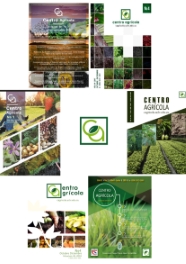RESEARCH ARTICLE
The Ecological Footprint of the Agrarian Sector in Villa Clara. A qualitative approximation
La Huella Ecológica del Sector Agrario en Villa Clara. Una aproximación cualitativa
Mario Reinoso Pérez1, Yomayki Martínez Pérez2, Yipsi Rieche Luis3
1-Facultad de Ciencias Agropecuarias, Universidad Central “Marta Abreu” de Las Villas, Cuba. Carretera a Camajuaní Km 5.5, Santa Clara, Villa Clara, Cuba, C.P. 54830.
2-Centro de Estudios Ambientales de Villa Clara, Carretera Central No. 716 entre Colón y Cabo Brito, Santa Clara, Villa Clara, Cuba, C.P. 50100.
3-Centro de Información y Gestión Tecnológica de Villa Clara. Calle Marta Abreu No. 55 e/ Zayas y Villuendas, Santa Clara, Villa Clara, Cuba, C.P. 50100.
E-mail: This email address is being protected from spambots. You need JavaScript enabled to view it.; This email address is being protected from spambots. You need JavaScript enabled to view it.; This email address is being protected from spambots. You need JavaScript enabled to view it.
ABSTRACT
This research deals with the environmental impacts and aspects and their relationship to the ecological footprint of the agrarian sector in Villa Clara. In order to achieve this goal, 23 enterprises were used as study cases, which were clustered according to the main land use: (i) succession planting (17) and (ii) livestock and animal production (6). The information collected was used to develop the environmental aspects and impacts matrixes associated to the productive processes in each enterprise. The environmental aspects with higher relative frequencies (> 0.60) were water and energy consumption, the existence of invasive plants, the soil use, the greenhouse gas emissions, the use of forest resources, the generation of solid wastes and the use of agro-chemicals. Such aspects are causing negative impacts on the environment, and consequently they are increasing the ecological print of the sector in this province. The use of heavy machineries, the generation of liquid and dangerous residues, the continuous grazing and the use of alien species had a significant impact with a relative frequency below 0.55. However, these environmental aspects should be under control. It is concluded that, in all of the studied cases, the environmental aspects had a negative incidence on the environment. And they contribute in many ways to increase the ecological footprint of the agrarian sector in the territory. The implementation of the Environmental Management System, according to the international standards, is recommended.





